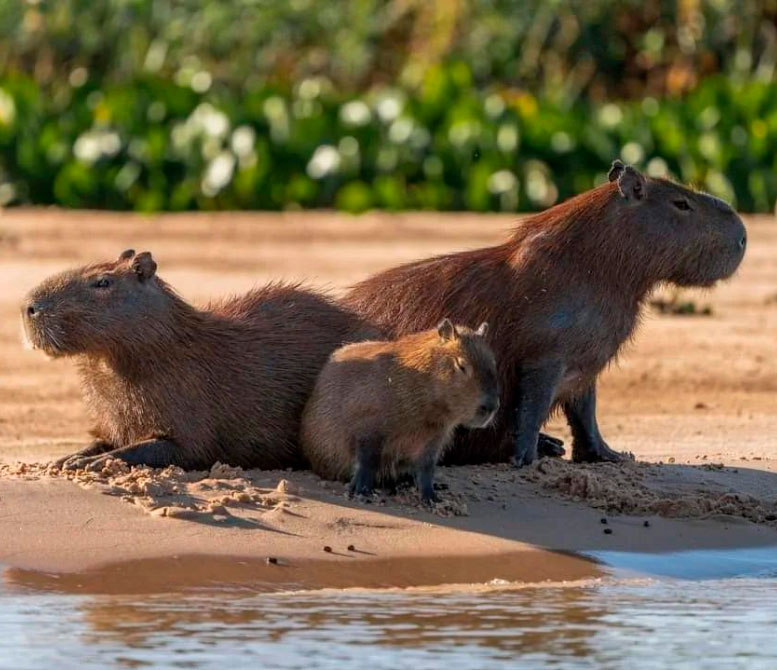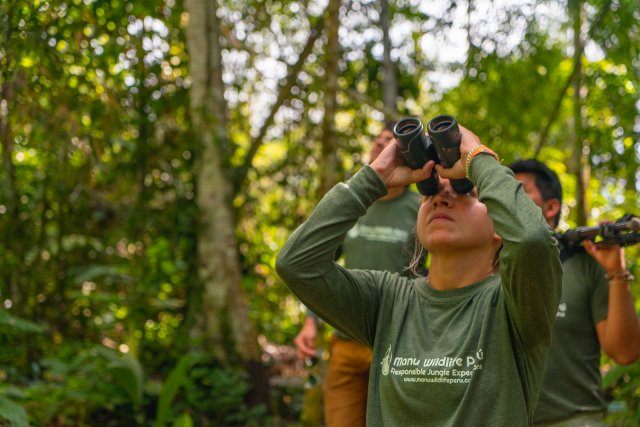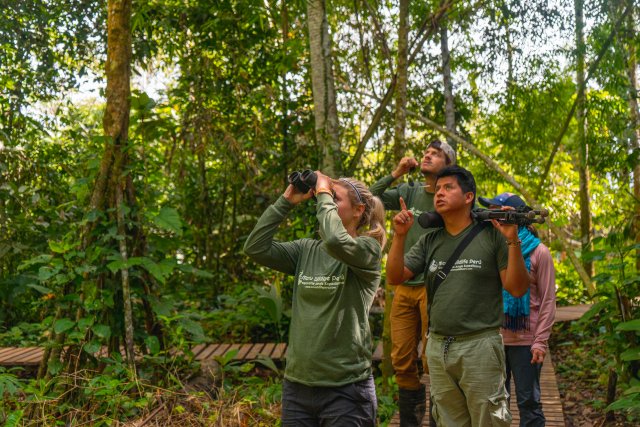The Weather In Puerto Maldonado

How Many Days Do You Need In Puerto Maldonado?
April 29, 2024
What Is The Tambopata National Reserve?
May 8, 2024When planning a trip somewhere new, it’s vital to look at the weather and know how this may affect your trip and experience.
It’s no different when heading to Puerto Maldonado, and in this area of the Amazon Jungle it’s important to know how the climate can really vary at different times of the year.
In this guide we’ll explore what the weather in Puerto Maldonado is like, the different seasons as well as answering any burning questions you may have in our FAQ section.
What Is The Weather Like In Puerto Maldonado?
Quick Answer: Overall this city is quite hot year-round, which is typical for these tropical regions that are found within the Peruvian Amazon.
Average temperatures hover between 73-79°F throughout the year, and within the city you can feel quite hot during the daytime (make sure to keep reapplying sunscreen). Mid-afternoon highs can reach up to 90°F, whilst evening lows are also still warm at between 66-73°F.
Whilst the above can vary somewhat, the rainfall is what really can change throughout the year. Puerto Maldonado is separated into distinct dry and wet seasons, with anywhere from 2-12 inches of rainfall falling throughout each of these months. Later in this guide we’ll take a look at the key differences of each season.
Visiting Puerto Maldonado In The Dry Season
The dry season begins in April and lasts until December. During these months we’ll find that temperatures are generally more pleasant and tolerable, with daily averages of between 73-78°F. Highs can reach up to 90°F, with lows of down to 64°F.
Rainfall is at its lowest during these months, which makes it the most popular time to visit Puerto Maldonado (and the surrounding Tambopata Jungle). We can expect anywhere from 1.5-5 inches of rainfall falling throughout each month in the dry season, which makes it more of a comfortable and pleasant time to stay in the city.
This season is best for seeing animals within the jungle (such as Giant River Otters and Black Caiman in Sandoval Lake), although it will also be more popular with tourists too.

Visiting Puerto Maldonado In The Wet Season
The infamous wet season begins around mid December, and runs up until the end of March. This period of the year is characterized by torrential rains and hotter weather, and overall is a wilder time to visit Puerto Maldonado. Daily averages hover between 78-80°F, with highs of 87°F and lows of 73°F.
Rainfall is much higher during this time of year, with anywhere from 8-12 inches falling throughout each month. This is quite a lot of rain, and the more humid climate can also be felt when walking around the city. For this reason it’s best to avoid walking around when the sun is at its strongest (between 11:00am and 13:00pm).
The wet season, however, is perfect for those who don’t want massive crowds with them – where we can explore this region of the Amazon in a more authentic setting. You’ll also see the jungle in a more lush green state as well.
The Weather In Puerto Maldonado FAQ
Here we’ll now answer some of the most frequent questions we get about the weather in Puerto Maldonado.
What Are The Different Seasons In Puerto Maldonado?
There are two main weather seasons in Puerto Maldonado. The dry season runs from April until December, whilst the wet season begins in January and ends in March. There’s also another period worth nothing – where between May and September the climate becomes cooler due to the cold winds carried up from Northern Argentina. You can learn more about this unique phenomenon in this detailed article.
What Is The Altitude Of Puerto Maldonado?
Puerto Maldonado is located at 183 m above sea-level. Whilst this low-lying destination won’t cause any usual altitude issues, it is possible to get symptoms of reverse altitude sickness (also known as HADAS). This includes symptoms such as fatigue and dizziness, and may occur when coming down from high-altitude areas of Peru such as Cusco.

Is There A Reliable Weather Forecast For Puerto Maldonado?
Although the weather is quite consistent depending on the season you are heading, it’s still worth looking at forecasts to see if it will be more favorable for certain days. We highly recommend checking out WeatherSpark for detailed forecast reports for Puerto Maldonado.
Puerto Maldonado Weather
Situated within the steamy Amazon Jungle, we can of course expect the usual hot and rainy weather that is usual for all regions in this formidable rainforest.
However Puerto Maldonado (and the surrounding Tambopata Jungle) do have their own unique climates and conditions, so it’s worth reading up again to make sure you plan properly in order to have the best experience possible.
Still planning your trip to this region of Peru? Be to check out our comprehensive Tambopata Guide to learn everything you need to know before heading here.



